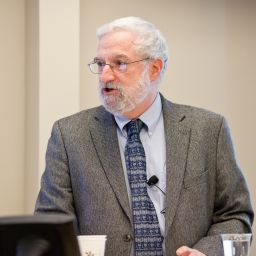In the wake of Charlottesville, Americans are confronting questions about how to make sense of the history of the Confederacy, the Civil War and race in America as they play out in our lives today. CNN Opinion asked a number of historians for their thoughts. The views in these commentaries are their own.
Amy Greenberg: Is ‘history’ what happened – or a foil for vile acts and beliefs?

Is “history,” as the term is being used in political debate these recent weeks and months, a record of the past that will stand up to objective scrutiny, or is the perceived gravitas of “history” being used as a foil for vile acts and beliefs?
I think rational people can debate whether removing a statue of a Confederate leader is in the best interests of a community, or of society as a whole. It’s possible to argue that obliterating evidence of “bad” historical events or “offensive” people might in the end be counterproductive, allowing a collective amnesia that the bad events ever happened.
But to say that taking down a statue of Robert E. Lee is taking away someone’s “history”– I’m not even sure what that means. One thing I’m quite sure of is that Robert E. Lee was not “exactly the same” as George Washington.
One devoted over 25 years of his life to creating a republic the likes of which history had never known, and for his sacrifice gained the title “Father of his Country.” The other was a traitor. Lee took up arms against the United States, leading a rebellion that was responsible for the deaths of over 600,000 Americans, and was defeated. The fact that Robert E. Lee wasn’t hung as a traitor was thanks to the benevolence of the US government.
I will admit that I’m not sure yet exactly what the role of history is in all of this. Yes, on one hand people are talking a lot about “history,” but when neo-Confederates talk about history, are they even talking about history as I know and teach and write it – a series of events that happened in the past, which can be factually documented and examined through the objective consideration of sources?
Yes, it’s true that George Washington owned slaves. But he, unlike Lee, lived in an era when slavery was a recognized fact in every American colony. Which did not stop George Washington from freeing his slaves in his will, a remarkable gesture for his time and place. But then again, I’m not sure anyone who claims that George Washington and Robert E. Lee were “exactly the same” actually believes that to be true.
Amy S. Greenberg is Edwin Erle Sparks professor of American history at Penn State University. An award-winning author of four books, including “A Wicked War: Polk, Clay, Lincoln, and the 1846 US Invasion of Mexico” (Vintage Books, 2013), she is writing a biography of first lady Sarah Childress Polk, to be published by Knopf in 2018.
Karen Cox: Generalizations cannot define the American South

The American South is very often a misunderstood region, especially for those who don’t know its history. This is true whether one grew up here or thinks he or she understands the South and Southerners from television shows, the movies or news sound bites. Based on perception, the region is thought to be wholeheartedly conservative politically and socially, intellectually backward and racist. Culturally, it gets respect for its food, its music and that ubiquitous thing called “Southern hospitality.”
As a historian of the South who frequently writes about Southern culture, and as someone who has lived here since I was a kid, I would like people to know that the region cannot be defined with such generalizations, any more than one could describe all Europeans as having specific traits. Most people would agree that the Germans and the French are quite different. Given the geographical breadth of the South, the same holds true for the differences between people from northern Virginia and those who live in east Texas, both of which are considered part of the South.
What I’d also like for people to understand is what is meant by the term “Southerner.” So often, there’s an underlying assumption that a Southerner is a white evangelical. This couldn’t be further from the truth. Generations of black Southerners, Jewish Southerners, Greek Southerners and others have helped to shape this region. Being “Southern” is as much a part of their identity as their race or religion. Southern history is also their history.
The diversity of the South extends to its politics. While the South tends to elect conservative politicians to office, this is often a reflection of the urban/rural divide that can be found throughout the rest of the country. The South is very rural, and like rural populations outside of the region, it tends to vote more conservatively.
However, there are many exceptions to that rule. Urban areas here tend to vote for more progressive candidates. People who live in Charlotte, Atlanta, New Orleans and other cities in the region tend to vote quite differently than their rural counterparts.
Our history with race relations, of course, has shaped the region since before the founding of the nation. Slavery, Jim Crow and contemporary clashes over race still plague the South, but in this we are not alone. Historically, these have also been national concerns, though most Americans see fit to point their fingers at the South and assign blame. Believe me, there is plenty to go around.
Finally, as events in Charlottesville demonstrated, Southerners have a wide range of opinions when it comes to Confederate monuments. Unlike the Jim Crow era when those markers of Southern heritage were celebrated by the entire white community, many contemporary Southerners find themselves at odds with that heritage.
So, I encourage my fellow Americans across the nation to read more history, travel beyond Southern beach and mountain resorts, and expand their understanding of what makes the South Southern.
Karen L. Cox is professor of history at the University of North Carolina at Charlotte and the founding director of the graduate public history program. She is the author of multiple books about Southern history and culture, most recently “Goat Castle: A True Story of Murder, Race, and the Gothic South.”
James Grossman: Why can’t those in power just admit the Confederacy was a bad idea?

The aftermath of the tragedy in Charlottesville has stripped the facade from a landscape of national conflict, but has also provided an opportunity. On the one hand, we see an apparent tolerance for historical ignorance, but on the other, there is a renewed national interest in the subtleties of history and memory. Large portions of the American public – including the media – don’t know the history of the Confederacy, the Civil War, or how many of the Confederate monuments came to exist. So they are debating whether or not to erase a history that they don’t know very well.
The deeper and more troubling tolerance for historical ignorance, however, lies not only in the public at large but in public officials as well. Two weeks ago, Jared Kushner told congressional interns in the context of diplomatic work in the Middle East, “We don’t want a history lesson. We’ve read enough books.”
Based on comments on Tuesday and his subsequent tweets, the President clearly doesn’t know the difference between the accomplishments of George Washington and Thomas Jefferson (deeply flawed as they might have been) as opposed to Robert E. Lee and Stonewall Jackson, who are historically significant only because of their leadership in the attempt to establish what Confederacy Vice President Alexander Stephens described as a nation whose “corner- stone rests, upon the great truth that the negro is not equal to the white man; that slavery subordination to the superior race is his natural and normal condition.”
The President’s ignorance of history has been on vivid display before: in his homage to Andrew Jackson or reference to abolitionist Frederick Douglass in the present tense, as if he were still alive. This is disappointing but not tragic. What’s tragic is that so many Americans, including political leadership, think it’s acceptable to distort the past and freely spout untruths.
What’s also tragic is the refusal of our President to utter one simple sentence: “The Confederacy was a bad idea.” As a historian, I think we should all be able to agree that Alexander Stephens accurately summarized the individual Confederate states’ declarations of secession. We can argue within our communities about the interpretive and policy implications of that simple fact or about the social issues underlying debates over the fate of these monuments. But imagine if all 535 members of Congress and the President of the United States would just say “The Confederacy is a bad idea.” And then leave it to states and communities to debate the implications for public culture and policy.
James Grossman is the executive director of the American Historical Association. Formerly vice president for research and education at the Newberry Library, he is the author of “Land of Hope: Chicago, Black Southerners, and the Great Migration” and other works.
Peniel Joseph: History’s most enduring lesson? Change happens from the bottom up

Our contemporary racial landscape offers a comic-book version of our painfully bloody history, soft-pedaling the racial violence, subjugation and hatred associated with the Confederacy in favor of a sepia-toned image of stalwart and bravely defiant heroes devoted to the “Lost Cause.”
The modern civil rights struggle transformed the nation precisely because it refused to mythologize the history of white supremacy or make the rough places smooth in our national history. The struggle to create what Martin Luther King Jr. called a “beloved community” required painful truth-telling, to both the powerful and the poor. That lesson remains especially resonant in our own time, as a stunned nation watches in horror as an American president rejects the idea of racial justice as part of the nation’s creed.
As a historian privileged to teach, research and write about the long black freedom struggle for dignity, justice and equality, it is imperative that we remind our fellow citizens of all backgrounds about the hallowed ground of American democracy. The links between race and democracy stand at the center of our national story, a deeply tumultuous saga that often found the nation struggling to reconcile ideals of freedom and liberty with the grim reality of racial slavery, lynching and Jim Crow.
The Civil War represented a defining moment in our young nation’s history, an era whose legacy continues to be seen in the pockmarked residual scars that arise over Confederate statues, battle flags and symbols that connect past and present in uncomfortably illuminating ways.
Despite the tragic events in Charlottesville and the staggering failure of presidential leadership in its wake, we have reason to be optimistic. History’s most enduring lesson is that change happens from the bottom up, pushing institutions, organizations and yes, even presidents to catch up with social movements demanding justice.
Reimagining American democracy in the 21st century requires the personal and political maturity to acknowledge the depth and breadth of racial injustice while recognizing the fact that the current outrage over the President’s tone-deaf handling of the Charlottesville tragedy is reflective of a kind of progress that we should never ignore.
Peniel Joseph is the Barbara Jordan chair in political values and ethics and the founding director of the Center for the Study of Race and Democracy at the LBJ School of Public Affairs at the University of Texas at Austin, where he is also a professor of history.
Kevin Levin: Charlottesville is a game-changer in the Confederate monument debate

For those of us following the Confederate monument debate, the violence in Charlottesville was a game-changer. The murder of Heather Heyer will have the same impact on the call to remove Confederate monuments as the horrific events in Charleston did two years ago on the display of the battle flag. Baltimore quickly removed four monuments and Lexington, Kentucky, along with other towns and cities, will most certainly follow.
Before Charlottesville there was a possibility that cities like Richmond, which has made an effort to add monuments to its commemorative landscape and preserve important historic sites connected to slavery, would be able to steer a course that avoided removal of its Confederate monuments. Mayor Levar Stoney hoped to guide his city to just this conclusion in forming a commission to explore the possibilities of adding context to Monument Avenue. He recently revised this stance and will now consider removal as a possible solution. So what happened?
The white nationalist rally in Charlottesville exposed what has always been the fundamental question of whether Robert E. Lee or any other monument represents the collective values of the community. That was certainly the case when the Lee monument was dedicated in 1924, but that was accomplished as a result of legal segregation, which prevented any input from the city’s African-American population.
The history infused in Confederate monuments became a tool to justify and maintain white supremacy. Absent in the collective memory represented in these monuments was any recognition that Lee and other Confederates were willing to give their lives to create an independent slaveholding republic built on white supremacy.
The celebration of white supremacy is what brought neo-Nazis to Charlottesville in defense of the Lee monument. They clarified the terms of the debate. Calls for historical markers and other moderate solutions will do nothing to quell a debate that will help to answer the question of who we are as a community and as Americans.
Kevin M. Levin is an independent historian based in Boston. He is the author of “Remembering the Battle of the Crater: War as Murder” and editor of the forthcoming book, “Interpreting the Civil War at Museums and Historic Sites.” You can find him online at his website, Civil War Memory.
Jane Censer: Confederate memorials are a chapter in women’s history, too

Late in 1865 and 1866 in Southern towns and cities, white women created Ladies Memorial Associations (LMAs), which sponsored white community marches to the cemetery to decorate soldiers’ graves. In addition to identifying and moving Confederate soldiers’ remains from isolated locations, the LMAs provided grave markers. Over many years the Raleigh and Richmond societies paid to ship bodies from Gettysburg to be reinterred in Southern soil. Such groups also raised money to set up memorials in the cemeteries, which at first were arches, obelisks or triangles rather than statues of soldiers.
Although Southerners argued these actions were apolitical acts of mourning, the women clearly saw themselves as honoring patriotic heroes, even though that nation no longer existed. Yet even as the women’s associations adorned the cemeteries, other commemorative efforts emerged.
Late in the 1880s, organizations of Confederate veterans became active and began to erect commemorative statues of military and political leaders. The founding of the United Daughters of the Confederacy (UDC) in 1895 created a group of ladies interested in glorifying the Confederacy in schools and public spaces.
Almost from its inception the UDC took a more confrontational tone than the LMAs. From efforts to depict slavery as a kind, gentle institution and secession as caused by constitutional questions, the Daughters assumed what historian Karen Cox has called a role of “vindication,” which glorified the rightness of the “Lost Cause” – and crusaded for white supremacy.
By the 1890s, Confederate memorialization was moving from the cemetery to the courthouse square, and these efforts proceeded hand in hand with the rise of segregation and the disfranchisement of African-Americans. White Southerners showed their power by dominating public space with martial monuments – the Confederate soldier guarding the city or the Confederate officer on his valiant steed.
By 1914, the UDC succeeded in placing a Confederate memorial statue on the grounds of Arlington National Cemetery as a gift to the United States. And in the 1920s and 1930s, this flood of Confederate statuary continued.
Jane Turner Censer is a professor of history and art history at George Mason University. She is the author of many books including “The Reconstruction of White Southern Womanhood, 1865-1895.”
Richard Poplak: For an example of how to unshackle public spaces from a brutal past, look to South Africa

At the end of apartheid in 1990, South Africa was left with over 3,600 statues representing the major figures of colonialism and apartheid, along with numerous memorials commemorating Afrikaner or English glory. Hundreds have since been dismantled. Most have not. Toppling statues did not fall within Nelson Mandela’s Rainbow Nation narrative, nor did it appeal to democracy’s early leaders, who were more focused on reconciliation than on remodeling.
Even by this measure, what was a statue of colonialism’s poster boy – Cecil John Rhodes – doing on the University of Cape Town’s campus, where black South Africans, by far the demographic majority, were supposed to feel intellectually nourished? Across the country, a movement bubbled to life – a movement that culminated in the defacement of the Rhodes statue on March 9, 2015.
There was something powerfully transformative about student activists dousing the statue’s plinth in human excrement – this was the moment when South African public space was claimed from apartheid and colonialism’s bronzed grip, the moment when the past was both symbolically and literally fouled, and the first nascent steps toward real nationhood were taken.
And this was not just a student movement. A year before the Rhodes statue’s defacement, firebrand opposition politician Julius Malema, in his inaugural address to Parliament, had called for the felling of a sculpture of Louis Botha, South Africa’s first prime minister.
Malema was advancing an argument familiar to many Americans calling for statues representing historical figures from the Confederacy to be removed. “It is people like (Botha) who made white South Africans think they are superior,” he said, “and if we continue celebrating them, we are equally perpetuating white supremacy. The statue of Botha outside Parliament must go down, because it represents nothing of what a democratic South Africa stands for.”
Was Malema not encouraging just another instance of lefty campus snowflakism? Or, worse, was this not an erasure of history, asked his critics, a dangerous deletion of the country’s past that handed the future to Rhodes-like demagogues?
Regardless, defacing the UCT statue instantly ignited the Rhodes Must Fall movement, and along with it a campaign demanding not only the destruction of the statues themselves, but also the white supremacist institutions for which they provided symbolic ballast. “The removal of the statue will not be the end of this movement, but rather the beginning of the decolonization of the university,” read UCT Rhodes Must Fall’s mission statement.
Across South African campuses, calls for the destruction of statues became a call for a restructuring of the post-apartheid university – more black professors, more African-focused syllabi. This morphed into demands for free tertiary education for the country’s mostly poor, mostly black students.
Even after the Rhodes statue was removed by the university’s authorities on April 9, 2015, uprisings across South Africa rendered campuses periodically ungovernable. New bookstores, new literary festivals, entirely new lexicons were born.
It has not been a tidy or a pleasant process – like all revolutions, it has occasionally tipped over into violent self-parody. But in finally addressing South Africa’s proliferation of colonial statues, public spaces are becoming unshackled from the brutality of the past. Perhaps, in time, the public mind will follow.
Richard Poplak is a senior correspondent at South Africa’s Daily Maverick news and analysis website.
Sisonke Msimang: What American can learn from #RhodesMustFall

As Americans grapple with what to do with statues and monuments celebrating divisive historical figures, they may be interested in learning from the South African experience. The issues at play in Charlottesville were reminiscent of those that sparked the #RhodesMustFall movement, which began at the University of Cape Town in early 2015.
#RhodesMustFall was initially aimed at tearing down monuments to colonial and apartheid-era figures like British nationalist Cecil John Rhodes. The student activists who drove the movement argued symbols of the past no longer belonged in public spaces shared by black and white South Africans. Many black people have traumatic memories of discrimination, violence or abuse and those memorialized by monuments and place names were often the authors – directly or indirectly – of many of these acts of violence.
Debates about the legacy of Cecil John Rhodes and his place in South African society were robust and often emotive – yet they, unlike the scenes from Charlottesville, were largely non-violent.
In South Africa, the push to pull down the statue of Rhodes sparked a social movement that changed the psychological landscape of the country. Tearing down the statues and changing the names was merely an entry point; allowing student activists to address the lack of progress in the hiring and retention of black academic staff, the Eurocentric curriculum and the slow progress in making university education accessible to black youth in a country with burgeoning unemployment and high levels of poverty.
More importantly, at a national level the activism related to colonial and apartheid-era symbols forced South Africans to imagine the future anew. Emboldened by their successes, students across campuses in South Africa were able to articulate a new vision for their society that was startlingly different from that which Nelson Mandela had outlined for the nation in the early 1990s. Instead of forgiveness, the students preached justice. They pulled away from dialogue with whites and focussed instead on the myriad ways in which racism continues to manifest itself in the South African economy in ways that benefit the white minority.
There are many similarities between the US and South Africa. Both countries are haunted by racism and both nations have produced inspiring leaders who have challenged the scourge.
Perhaps most importantly, both countries are recognized globally as important constitutional democracies. South Africa’s constitution may be younger than America’s but its reach is deep and wide. It was clear this week that there are vast differences between the constitutional rights Americans and South Africans value.
A unique brand of individual liberty – the right to be nasty – seems to be growing in importance in America, spurred no doubt by the rise of President Donald Trump. This mean streak was on display in Charlottesville amongst the white supremacists. This was to be expected – overt racists are seldom invested in being nice. What is especially worrisome are the startling similarities between the occupant of the White house and the racist combatants who went to war to protect a glorious past that never existed.
With this week’s events, Mr. Trump seems committed to widening the gap between America and its greatness.
Sisonke Msimang is a South African writer on race, gender, democracy and South African politics. Follow her on Twitter @sisonkemsimang.







